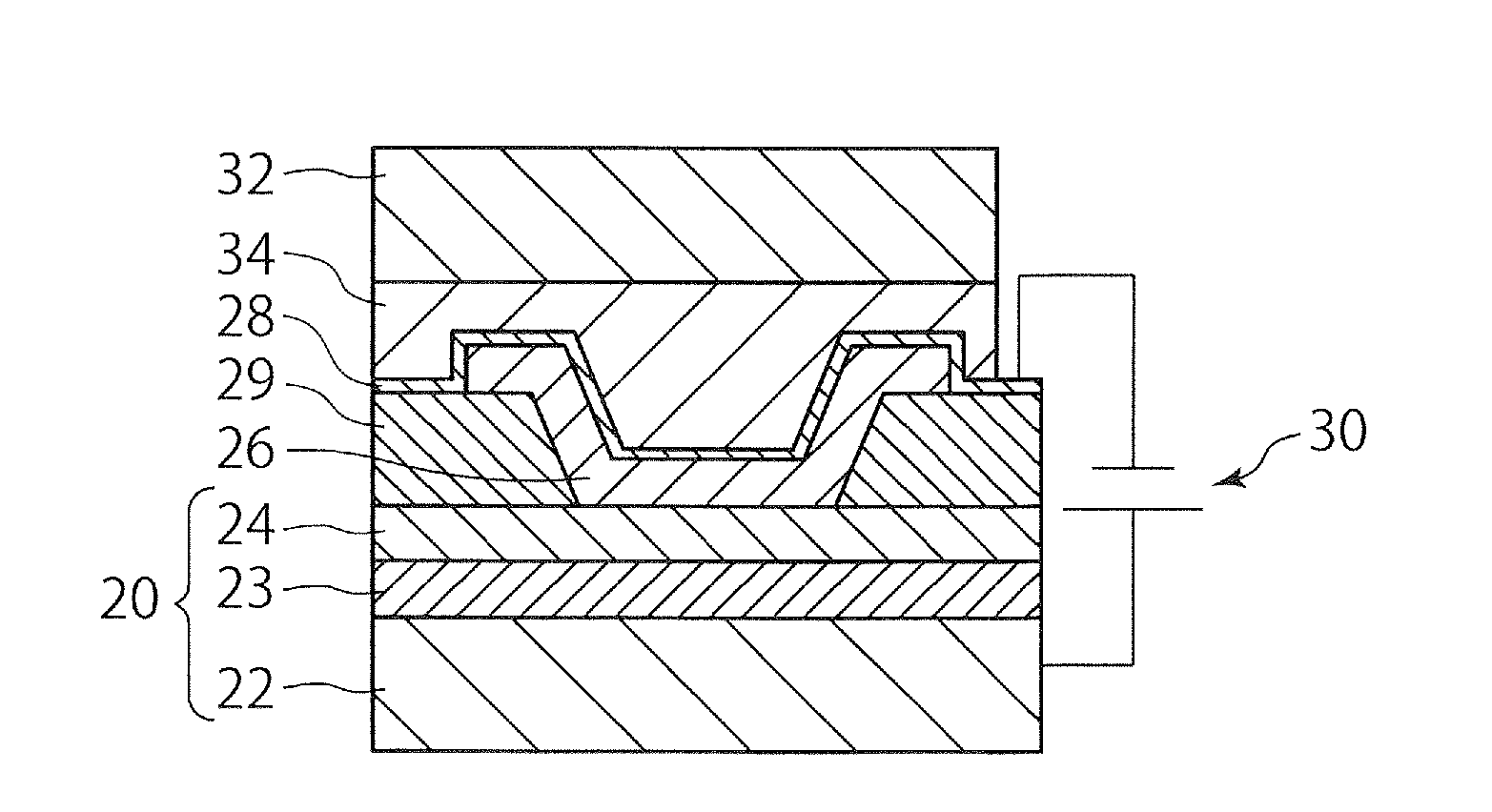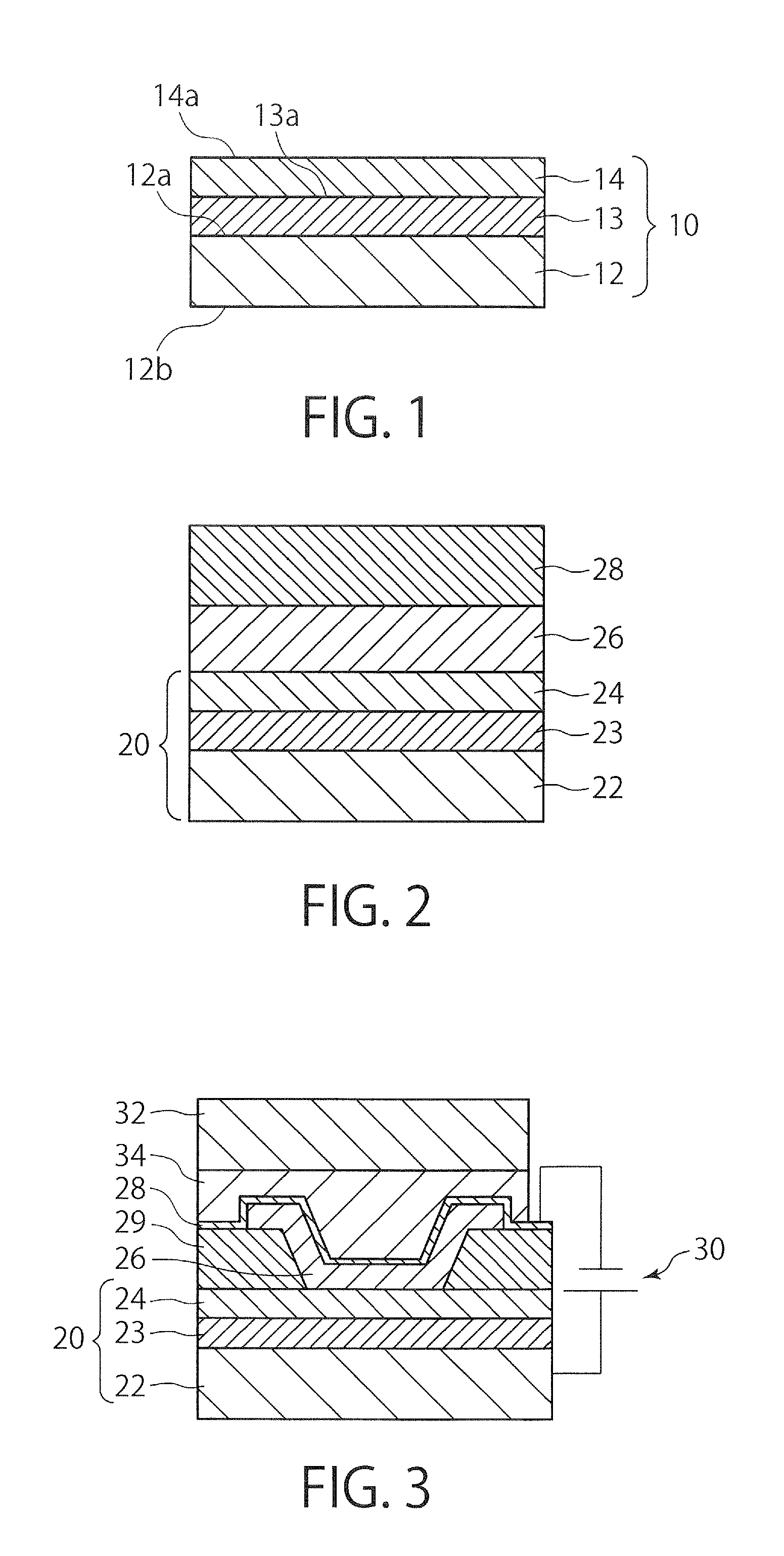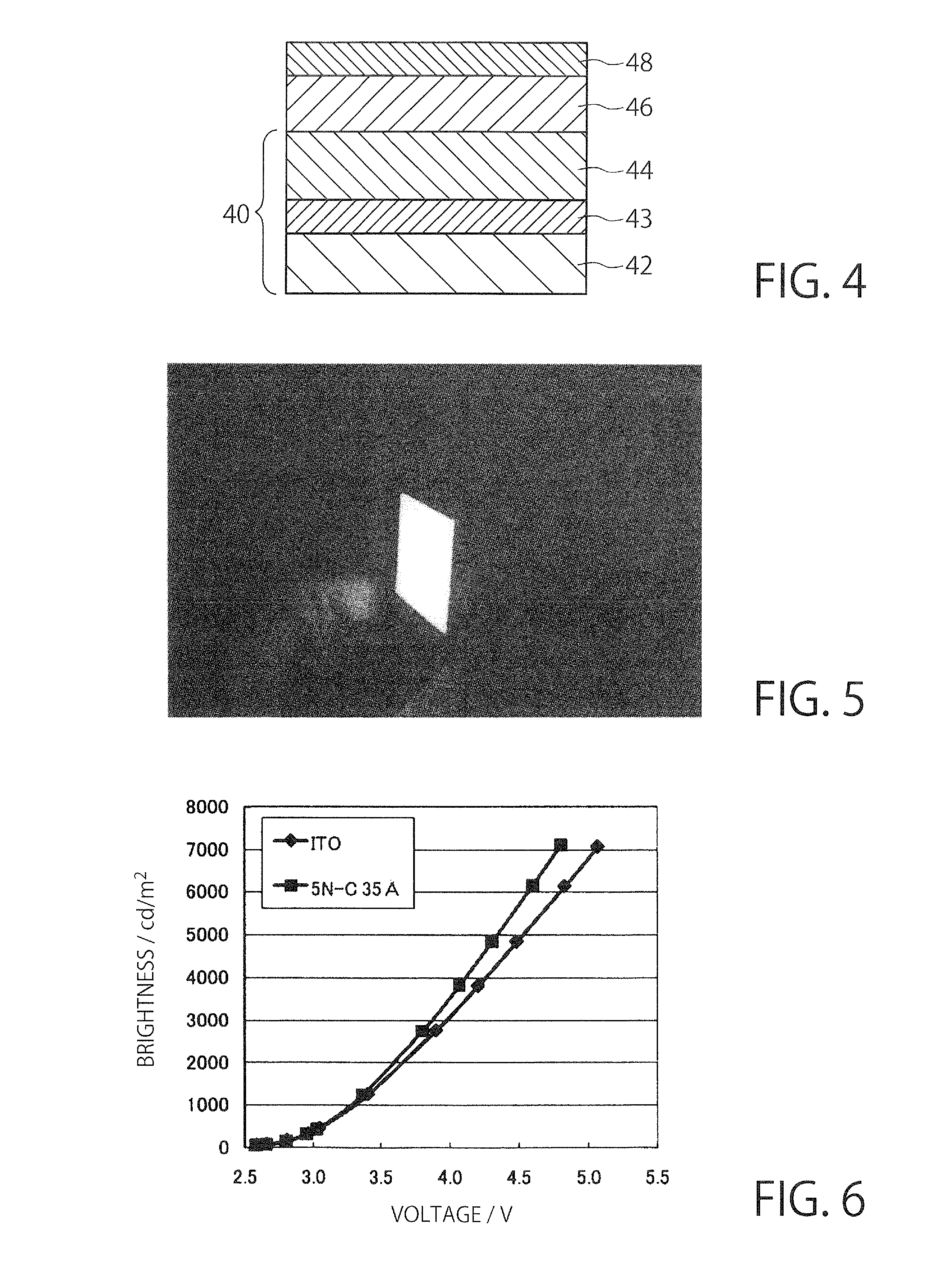Electrode foil and organic device
- Summary
- Abstract
- Description
- Claims
- Application Information
AI Technical Summary
Benefits of technology
Problems solved by technology
Method used
Image
Examples
example 1
Preparation of Cu / Al-Alloy / ITO Electrode Foil
[0083]As a metal foil, 64 μm thick commercially available both-side-flat electrolytic copper foil (DFF (Dual Flat Foil), manufactured by Mitsui Mining & Smelting Co., Ltd.) was prepared. The surface roughness of the copper foil was measured with a scanning probe microscope (Nano Scope V, manufactured by Veeco Instrument Inc.) in accordance with JIS B0601-2001, resulting in an arithmetic average roughness Ra of 12.20 nm. This measurement was performed in an area of 10 μm square using a Tapping Mode AFM.
[0084]The copper foil was subjected to CMP (Chemical Mechanical Polishing) treatment with a polishing machine manufactured by MAT Inc. This CMP treatment was performed by using a polishing pad having XY grooves and a colloidal silica polishing liquid under the conditions of pad rotation speed of 30 rpm; load of 200 gf / cm2; and liquid supply rate of 100 cc / min. The copper foil thus treated with CMP was subjected to measurement of the surface ...
example 2
Preparation of Cu / Al-Alloy / C Electrode Foil
[0087]An electrode foil was prepared in the same manner as in Example 1 except that a carbon buffer layer with a thickness of 1.7 nm or 3.5 nm was formed by sputtering in place of the ITO buffer layer. As a carbon target for the sputtering, two types of carbon targets were prepared including a non-treated carbon target with a purity of 3N (99.9%) made from a carbon material (IGS743, manufactured by Tokai Carbon Co., Ltd.); and a carbon target having a purity of 5N (99.999%) made from the above carbon material through purification treatment with a halogen gas. By using each of these targets, the carbon buffer layer was formed by sputtering. This sputtering was performed under the conditions of input power (DC) of 250 W (0.8 W / cm2); ultimate vacuum of lower than 5×105 Pa; sputtering pressure of 0.5 Pa; Ar flow rate of 100 sccm; and substrate temperature at room temperature, after mounting each carbon target (203.2 mm diameter and 8 mm thick) ...
example 3
Preparation of Cu / Ag-Alloy / ITO Electrode Foil
[0088]An electrode foil having a buffer layer and a reflective layer was prepared in the same manner as in Example 1 except that an Ag alloy reflective layer with a thickness of 150 nm was formed by sputtering in place of the Al alloy reflective layer. This sputtering was performed under the conditions of input power (DC) of 150 W (1.9 W / cm2); ultimate vacuum of lower than 5×10−5 Pa; sputtering pressure of 0.5 Pa; Ar flow rate of 90 sccm; and substrate temperature at room temperature, after mounting a silver alloy target (101.6 mm diameter and 5 mm thick) having a composition of Ag-1.0Cu-1.0Pd (at %) on a magnetron sputtering apparatus (MSL-464, manufactured by Tokki Corp.) to which a cryopump was connected. Film thickness was controlled by regulating discharging time.
PUM
| Property | Measurement | Unit |
|---|---|---|
| Thickness | aaaaa | aaaaa |
| Thickness | aaaaa | aaaaa |
| Thickness | aaaaa | aaaaa |
Abstract
Description
Claims
Application Information
 Login to View More
Login to View More - R&D
- Intellectual Property
- Life Sciences
- Materials
- Tech Scout
- Unparalleled Data Quality
- Higher Quality Content
- 60% Fewer Hallucinations
Browse by: Latest US Patents, China's latest patents, Technical Efficacy Thesaurus, Application Domain, Technology Topic, Popular Technical Reports.
© 2025 PatSnap. All rights reserved.Legal|Privacy policy|Modern Slavery Act Transparency Statement|Sitemap|About US| Contact US: help@patsnap.com



